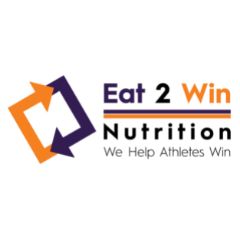Nutrition for the Injured Athlete
Q&A for Session #3
Roberta Anding, MS, RD/LD, CDE, CSSD, FAND
Sports Nutrition Symposium 2.0
Tuesday January 19th @12pm CST
The session will compare and contrast starvation versus stress and the alteration of fuel sources. The nutritional requirements during injury vary with the degree of the insult. This presentation will review the nutritional needs for common sports injuries.
All live sessions are free to attend. If you want lifetime access to the sessions from Sports Nutrition Symposium 1.0, 2.0 and 3.0 then check out the VIP Pass!
- What predictive equation for energy needs do you prefer and how do you factor injury as accurately as possible?
- Cunningham: all the numbers are estimates and most athletes will not be weighing out foods; Making an educated guess
Harris benedict can be used as well; factors in injury factor and there is a correction factor for starvation.
History taking is important; need to know anything unpredicted, was it worse than expected, know extent of injury; Use the ability to think of this in a practical way- Use the athlete plate, then weigh them and know where they are. You need to educate them on what that looks like on the plate! Have them take pictures, send them to you and make critiques; Crunching numbers is not a home run. Start with Cunningham equation that provides an educated guess on energy needs, work with athlete on having their plate at meals provide their required calories, have them text the sports RD a picture to ensure their plate is balanced to promote recovery, weigh the athlete, and make adjustments from there.
- Cunningham: all the numbers are estimates and most athletes will not be weighing out foods; Making an educated guess
- In regards to energy balance would you say that protein takes precedence to preserve the lean mass, then good quality fats, and round out with carbs on the lower side as you said because they aren't as active. I'm curious how you are prioritizing energy needs; total cals and macro distribution.
- Yes, when you look at people with anorexia nervosa; as long as protein is high they don’t end up with the same degree of protein calorie malnutrition than you may find in someone who is just protein deficient. Healing plate: focus on did you get enough protein, omega-3s, strategic supplementation- to reach 1,000 mg of Vitamin C an athlete may need to supplement, intake a moderate amount of quality carbs- not eliminating. Strategic Supplementation of vitamin b, c, omega 3’s, and possibly collagen.
- Is the omega recommendation only for adults or would they also be acceptable for teen athletes
- Really depends on where they are in Tanner staging. Tanner 5 means you are done developing. If someone is growing and developing it depends on body weight. In the research, it states 40 g/kg of body weight (for adolescents).
- When should Omega be supplemented for injury, how much in grams, and what ratio of EPA and DHA?
- Depends on type of injury. The fat that accumulates in brain is mainly DHA and in the RBC is mainly EPA. Start with 2,000 DHA + EPA combined; EPA can convert to DHA. Ensure you get enough EPA therefore. There may be retroconversion from DHA to EPA, but to her it is all about EPA. Opt for brands with higher potency of EPA. Starts at 2,000 mg of DHA + EPA.
- If following these recommendations, is there a percent loss of LBM to expect until the athlete is back to normal?
- There is to some degree. Combination of intervening nutrition day of injury and work with strength coach in recovery; Has been replaced by blood flow restrictive therapy . 2-3% LBM loss is normal and expected; but if in elite facility, the goal is to not have that; If you put them back out to play there is higher risk of further injury. Its an aggressive team approach. This is where is it not an RD alone, requires the whole healthcare team to prevent losses.
- Are those protein recommendations based on LBM or bodyweight?
- Bodyweight- usually what you have universally. Caveat- if you have someone who has 40% body fat, use LBM. Something to play around with and use your clinical judgement.
- Might you be able to provide a few examples of omega 3 sources you offered to athletes on their training table?
- Albacore tuna, salmon(go-to), cod (Mild)- being cognizant of mercury levels. For non-fish eaters-recovery drinks with omega-3s (1.6grams) would have to drink more than one. Omega 3 fatty acid supplements recommended to ensure adequate amount
- What do you think of taking into account vitamin d binding protein as part of your vitamin d assessment?
- Where we see the Vit D paradox; African Americans are more likely to have low Vit D but least likely to have bone disease. Question is are we measuring the right metabolite of Vitamin D?; When African Americans came into her and had below 20 they were in there for soft tissue injuries much more likely. Can see the role for it in soft tissue injuries, independent of bone; Are we over supplementing Vit D in the African American population based on differences in receptors?
- Would you use gelatin/collagen as a preventive measure?
- Depends on budget; Probably use collagen in liquid as its slightly more palpable; You try it first; Much more success with gelatin squares (Athletes think jello) but it's more concentrated. Depends on budget, how you want to use it, recommendations and population (Collagen expensive).
- Can paleo or keto diets be beneficial post-injury if proper supplementation is followed?
- Seeing the change in energetics in the CNS post-concussion; possibly CHO restriction may be beneficial. Depend on what you’re utilizing it for, Strategic supplementation if going that route. Taking out whole food groups can induce malnutrition; Has seen scurvy in people who do these without proper supplementation
- Could excessive protein intake affect the healing process?
- Do not know the answer although if it's excessive Does it crowd out something else or another healing nutrient (like Vit C?)


